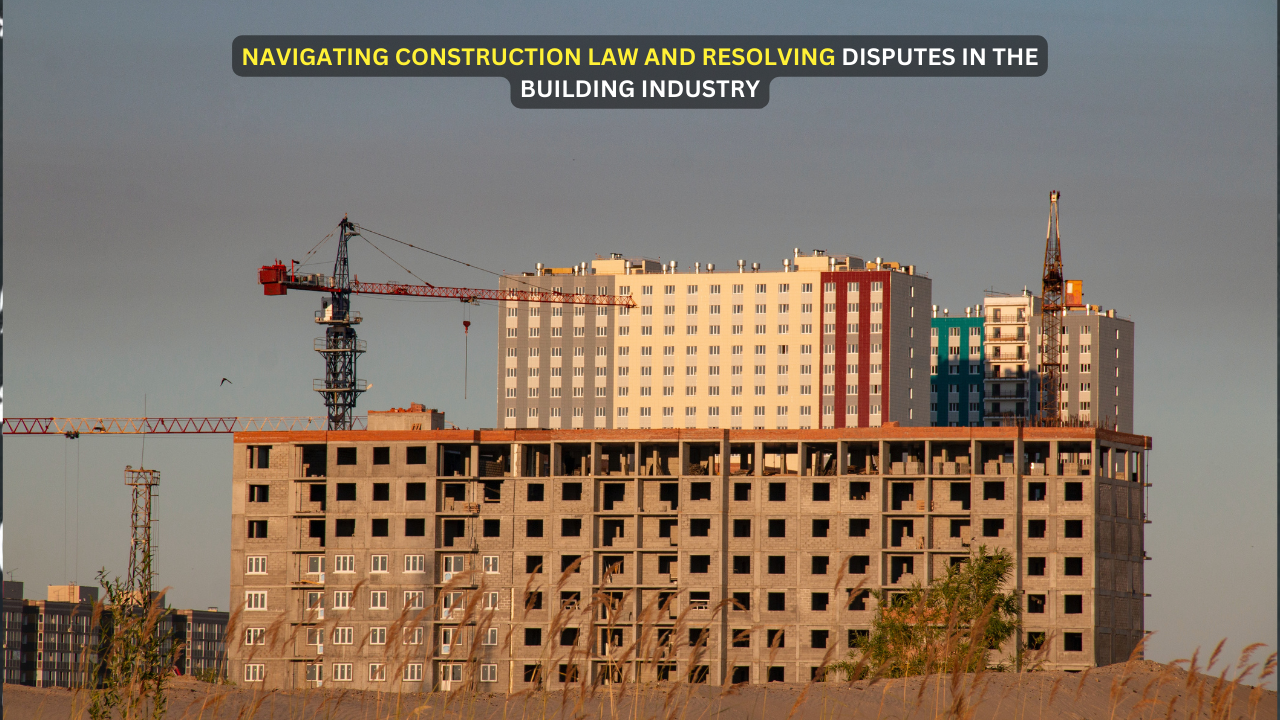The construction industry plays a pivotal role in shaping the modern world, providing essential infrastructure, commercial spaces, and residential dwellings. However, the complex nature of construction projects often gives rise to legal issues and disputes. Navigating construction law and effectively resolving disputes is imperative to ensure the smooth progression of projects, maintain stakeholder relationships, and uphold the integrity of the industry. This article delves into the intricacies of construction law, the common sources of disputes, and the methods employed to resolve them.
Understanding Construction Law:
Construction law is a specialized field that encompasses the legal principles and regulations governing the planning, design, construction, and maintenance of structures. This branch of law addresses a wide array of issues, including contracts, insurance, permits, zoning regulations, environmental concerns, labor disputes, and more. The multifaceted nature of construction law reflects the collaborative efforts required in construction projects, involving various parties such as owners, contractors, subcontractors, architects, engineers, and suppliers.
Common Sources of Disputes:
Disputes are almost inevitable in the construction industry due to the intricate web of relationships, technical challenges, and financial pressures. Some of the common sources of disputes include:
- Contractual Disputes: Ambiguities or inconsistencies in contracts, as well as disagreements over scope changes, payment terms, and project timelines, can lead to disputes between parties.
- Defective Work or Delays: Construction projects are vulnerable to defects in workmanship and delays, which can stem from poor execution, design flaws, or unforeseen site conditions.
- Payment Disputes: Conflicts over payment can arise when parties differ on the amount due, the timing of payments, or the approval of work completed.
- Design Issues: Disagreements over design specifications, changes, or omissions can lead to conflicts among stakeholders.
- Environmental and Regulatory Concerns: Compliance with environmental regulations, zoning laws, and other legal requirements can give rise to disputes, especially when unexpected hurdles arise.
- Labor Disputes: Disagreements related to labor conditions, safety, wages, and union issues can disrupt construction projects.
- Termination of Contracts: When contracts are prematurely terminated, disagreements regarding the justification for termination and resulting liabilities can occur.
Methods of Dispute Resolution:
To mitigate the impact of disputes on construction projects, various methods of dispute resolution are employed. These methods can be broadly categorized into informal and formal processes:
- Negotiation: As a first step, parties attempt to resolve disputes through direct negotiation, focusing on open communication and compromise.
- Mediation: A neutral third party, the mediator, assists the disputing parties in reaching a mutually agreeable solution. Mediation is non-binding but aims to facilitate voluntary resolution.
- Arbitration: In arbitration, parties present their cases to an arbitrator or a panel of arbitrators who render a binding decision, similar to a court judgment. Arbitration is less formal and more expedient than traditional litigation.
- Litigation: If other methods fail, parties can resort to litigation by filing a lawsuit in court. This formal process involves presenting evidence, witnesses, and legal arguments to a judge or jury, who then make a binding decision.
- Dispute Review Boards (DRBs): DRBs are impartial panels that offer real-time project guidance and issue recommendations to resolve disputes as they arise.
- Adjudication: Adjudication is a rapid interim dispute resolution process that is common in certain jurisdictions. It involves a neutral adjudicator making swift decisions to maintain project momentum.
Best Practices for Navigating Construction Law and Disputes:
- Clear Contracts: Well-drafted contracts are essential to prevent disputes. Contracts should outline project scope, timelines, payment terms, change order procedures, and dispute resolution mechanisms.
- Document Everything: Comprehensive record-keeping of all project-related communications, decisions, and changes can serve as crucial evidence in case of disputes.
- Early Issue Identification: Addressing potential issues and conflicts at their initial stages can prevent escalation into full-blown disputes.
- Open Communication: Maintaining open lines of communication between all parties fosters transparency and helps in resolving misunderstandings promptly.
- Expert Advice: Seeking legal counsel and involving experts in construction law and project management can provide valuable guidance throughout the project lifecycle.
- Alternative Dispute Resolution (ADR): ADR methods like mediation and arbitration are often quicker and more cost-effective than litigation, making them attractive options for dispute resolution.
- Risk Management: Implementing risk management strategies can help identify and mitigate potential sources of disputes before they arise.
Conclusion:
Navigating construction law and resolving disputes in the building industry is a complex yet essential endeavor. With the right legal knowledge, effective communication, and a commitment to finding mutually beneficial solutions, the construction industry can overcome the challenges posed by disputes and continue to deliver vital infrastructure that shapes the world we live in. By understanding the sources of disputes, adhering to best practices, and utilizing appropriate dispute resolution methods, stakeholders can contribute to the growth and sustainability of the industry while minimizing disruptions and legal entanglements

